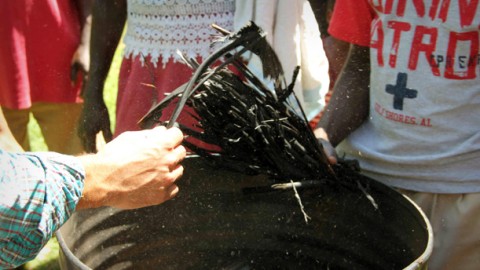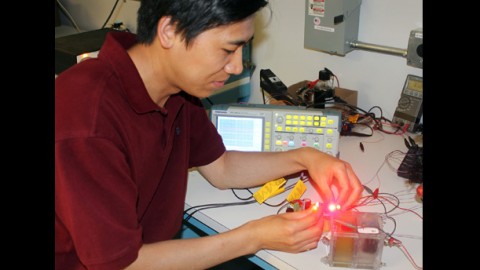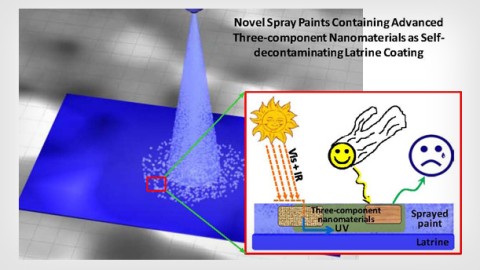On November 7, 2011, more than 100 researchers from around the world were awarded Grand Challenges Explorations grants. Each will receive $100,000 to conduct innovative, early-stage research projects focusing on global health and development topics such as nutrition, infectious disease, sanitation, and immunization strategies. Some of the winners are featured here.

Ricardo Radulovich of the University of Costa Rica/FUNDEVI is scaling up sustainable seaweed farming ventures in Costa Rica to formulate the crops into a nutritious, low-cost stand-alone food or supplement.

Kevin Nicholas of Deakin University in Australia is studying the milk composition of lactating tammar wallabies to identify proteins - and then their human equivalents - that promote gut functioning and stomach development in infants. These human proteins could be developed into a supplement for preterm and low birth weight babies.

Kiersten Israel-Ballard of the Program for Appropriate Technology in Health (PATH) in the U.S., working with the University of Washington and Human Milk Banking (HMB) Association of South Africa, is developing a low-cost, cell-phone sensing system to monitor flash-heating pasteurization of breast milk for donation to vulnerable infants.

Jacob Godfrey Agea of Makerere University in Uganda will breed Nsenene grasshoppers, which are a rich source of protein, and mill them for use as flour or an additive in foods such as cereals and grains for infants and children.
Photo courtesy of Fred Mugira

Alistair McEwan of The University of Sydney in Australia is developing a low-cost, easy-to-use electronic device that uses LEDs, solar cells and inexpensive components to measure subcutaneous fat levels and detect malnutrition in newborns.

Mark van Raaij of the Spanish National Research Council at the National Center for Biotechnology in Spain is building a library of engineered viruses (bacteriophages) that can recognize, infect, and kill a range of bacterial pathogens such as Salmonella and E. coli.

Virginia Cornish and Nili Ostrov at Columbia University in the U.S. are engineering baker’s yeast to produce a natural red pigment upon exposure to the cholera pathogen in drinking water. This safe and simple sensor could be inexpensively manufactured for household monitoring of cholera in communities at risk for infection.

Matt Cottingham of The Jenner Institute at the University of Oxford in the United Kingdom is engineering a vaccine vector that uses HIV antigens and the immune evasion genes of cytomegalovirus (CMV) for use in an HIV vaccine that could elicit a strong immune response without safety issues that typically accompany the use of CMV in vaccines.

Mario Ostrowski of the University of Toronto in Canada is testing the ability of endogenous retrovirus antigens to mark HIV infected cells, providing a basis for the development of a new HIV vaccine.

Phillip M. Gerk of Virginia Commonwealth University in the U.S. is testing the ability of fatty acid transporters to deliver antiretroviral drugs to the central nervous system and to lymphatic tissues in the gut, which provide sanctuary for latent HIV.

Seth Pincus of Children's Hospital New Orleans in the U.S. is studying how the depletion of CD4+ memory cells harboring latent HIV might affect the latent HIV reservoir and the immune system in general.

Jason Aramburu of re:char in the U.S. will use low-cost pyrolysis reactors to convert human waste into biochar, which can be used as a replacement for wood charcoal or chemical fertilizers.

Taber Hand of Wetlands Work! in Cambodia is testing a unique waste water treatment system for use under toilets of houseboats in floating villages in Southeast Asia. Floating "pods" similar to children’s wading pools are filled with plants whose roots trap the organic matter, breaking down the waste and filtering the water.

Zhiyong Ren of the University of Colorado Denver in the U.S. is developing a low-cost and easy-to-operate bioelectric system that uses microbes to break down waste and convert it to usable electricity.

Yuanbing Mao of the University of Texas-Pan American in the U.S. is developing spray paints that use nanomaterials to trap contaminants and convert UV light to destroy the pathogens. These spray paints could be used as decontaminating coatings for latrines.

Richard Fletcher of Massachusetts General Hospital Center for Global Health in the U.S., in collaboration with Massachusetts Institute of Technology, is developing a cell phone system that can capture images of hand vein patterns for patient identification, GPS-tag it to track location information, and scan labels on vaccine doses to assess the quality and its expiration date.

Elizabeth Belding and Amr El Abbadi of the University of California at Santa Barbara in the U.S. are testing a low-cost cellular architecture with an integrated information system that can determine a child’s immunization status, disseminate vaccine-related information, and track at-risk populations.

Satoshi Kashiwagi of Massachusetts General Hospital in the U.S. is researching whether pre-treating the skin at the site of a vaccination with an infrared laser can stimulate a stronger immune response to the polio vaccination. This laser-based technology could reduce the number of vaccinations required to protect children from polio.

Mark Prausnitz of Georgia Institute of Technology and Steve Oberste of the Centers for Disease Control and Prevention in the U.S. are testing the use of microneedle patches to deliver the inactivated polio vaccine (IPV) instead of using intramuscular vaccine shots. This new method could lower the required dose, simplify vaccination procedures, and eliminate dangers associated with hypodermic needles.